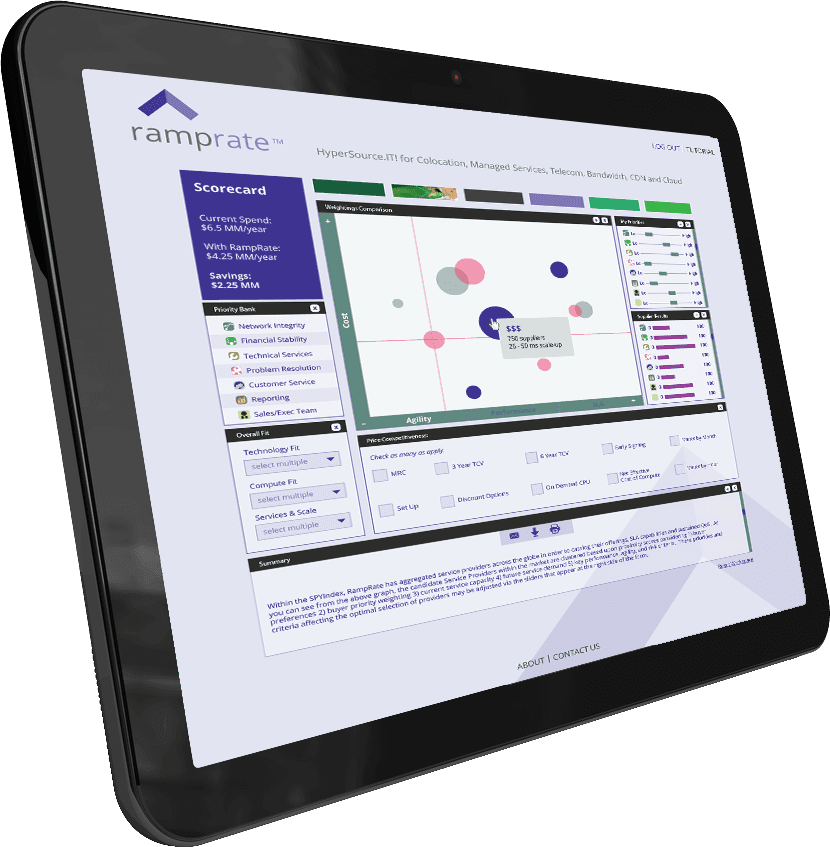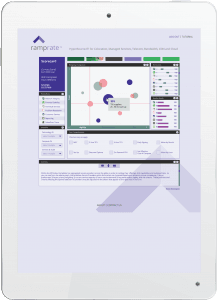What percentage of your total operational expense is dedicated to Information Technology?

2 percent? 20 percent? Somewhere in between?
Today’s technology Strategy enables incredible business achievements, but overall total IT spend continues to consume inordinate resources. While some technology markets get cheaper, others continue to climb. For which services are you paying too much?
Enter RampRate. Knowledge is power and RampRate’s SPY Index™ can give you definitive numbers on real market costs across your IT spending categories.
How much are my strategic relationships really costing me?
Quality is just as important as cost.
But, exactly how much is the premium? During a RampRate engagement, you have the opportunity to set and balance priorities across multiple considerations.
Using our proprietary systems and processes, your best choices will stand out from the noise based on your criteria, clearly and factually supporting confident decision making.

What are our peers paying for IT? If less than us, why?
Are you carrying a 20-pound weight around your neck when starting the race?
Lean is mean, and RampRate has the data and relationships to show you exactly where you stand versus others. Of course, we’d never identify specific companies, but we show you specifically how your spending compares to industry and like-size business.
If you’re paying too much, it means one of two things: Your contracts have not kept pace with the market, or your contracts were negotiated with imperfect knowledge of the real prices being paid in today’s market.
What are the systemic risks in my IT strategies?
Sometimes the best-laid infrastructure plans go awry in the execution.
Often, the fault is in the plans themselves. Either way, the time to fix it is not when your business has come to a standstill and heads are about to roll. Our review and audit of your actual deployments or plans for new roll-outs can identify and eliminate exposure to single points of failure:
– Geographic – by understanding exposure to taxes, natural disasters, and political stability factors we can help you locate that key hub away from danger or, better yet, diversify into multiple locations that won’t be hit by the same tsunami or earthquake.
– Supplier – by ensuring top-notch governance and market-based price adjustments, we keep even the most strategic suppliers from abusing their power and help you diversify your supplier pool for further backup against financially-driven change or service being phased out.
– Network and power – a review of routing can often reveal that seemingly redundant networks and power grids are actually liable to single points of failure. We go the extra mile in due diligence to ensure true redundancy.
– Cultural and technical fit – sometimes the solution you want is not one your organization is ready for. Whether it’s offshoring your desktop support or moving legacy apps to the cloud, we’ve worked to identify red flags and suggest mitigation strategies/alternative approaches to close the gap.




